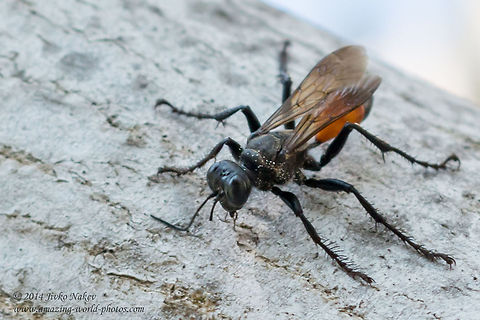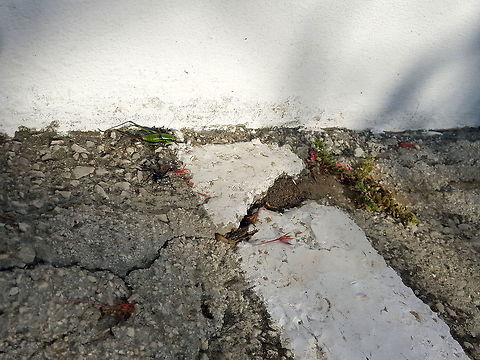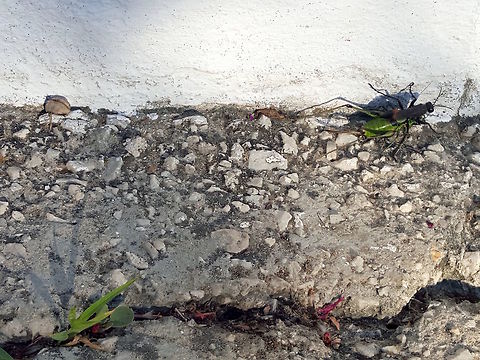Habitat
A mainly coastal species and one which is often locally common on sandy soils.Reproduction
In preparation for egg laying, they construct a protected "nest" (some species dig nests in the ground, while others use pre-existing holes) and then stock it with captured insects. The wasps lay their eggs in the provisioned nest. When the wasp larvae hatch, they feed on the paralyzed insects.The prey is generally captured before nest construction. The unicellular nest is invariably provisioned with one large caterpillar. While the wasp is digging her burrow, the paralysed caterpillar is typically left in a small tuft of vegetation, which probably reduces the risk of it being discovered by predators, such as ants, or of desiccating on the hot sand. The burrow is oblique and 6-7 cm long. When it is complete, the prey is pulled into the cell, oviposited on, then the nest entrance closed using sand and debris.
References:
Some text fragments are auto parsed from Wikipedia.
http://en.wikipedia.org/wiki/Sphecidaehttp://waste.ideal.es/podaloniahirsuta.htm
http://www.eu-nomen.eu/portal/taxon.php?guid=urn:lsid:faunaeur.org:taxname:196179
http://www.faunaeur.org/full_results.php?id=196179


